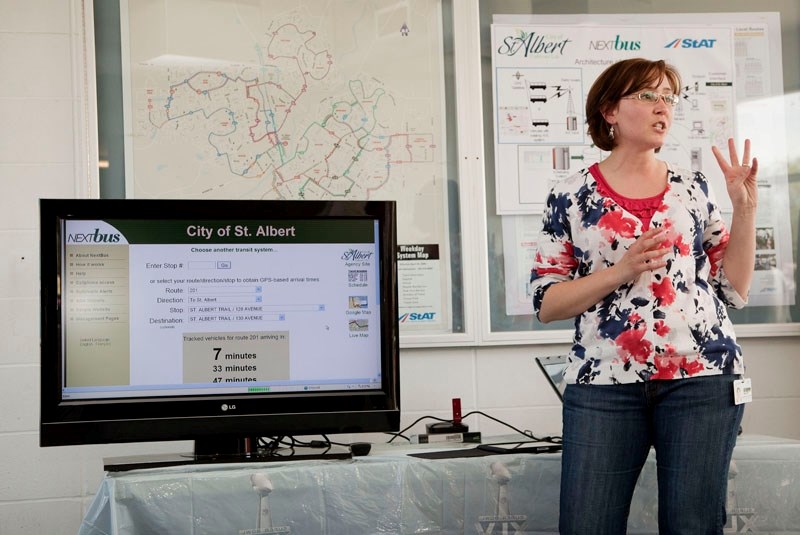St. Albert Transit riders can now access real-time bus location information from any web-enabled device.
The city is now live with a new website that allows transit users to enter their bus stop location and find out when the next bus will arrive.
The service, known by the trade name NextBus, is accessible at www.nextbus.com. The site posts arrival times for the next three buses on the chosen route and allows users to see where their bus is on a map.
“No one likes to wait for the bus more than they have to, so people using St. Albert Transit will find NextBus will save them time,” said transit director Bob McDonald. “We are pleased to be among the first municipalities in Canada to offer such a service.”
The system uses GPS technology that’s on board all St. Albert transit buses. It tracks the actual speed of the buses and accounts for real-time delays, McDonald said.
The city has been testing the technology since April, when it invited 340 people to try out the tool. Those riders used it more than 4,500 times.
St. Albert is the sixth municipality in Canada and the second in Alberta (after Banff) to adopt the technology, which is also used in Los Angeles, Boston, Washington, D.C. and San Francisco, said Brian Boychuk executive vice-president of business development for InterFleet, the technology supplier.
Putting this type of real-time tracking in the hands of riders represents a shift in mindset on the part of transit operators, he said.
“It used to be, the public was a necessary evil — I just want to get the bus to the stop on time — that was the old school thinking. Now it’s about getting passengers to the stop,” Boychuk said. “If you make it easier, you increase ridership.”
About one third to half of transit users typically use the website, he estimated.
NAIT student Angus Lillico, has accessed the feature numerous times on his iPhone.
Knowing exactly when his bus will arrive allows him to do errands or grab a coffee rather than wasting time at the bus stop, he said.
“Sometimes I’ve had a situation where I think I’ve missed it but I’m not 100 per cent sure. Now I can get that clarity,” he said.
With the prevalence of smartphones, the system will be widely used, predicted Mayor Nolan Crouse.
“It’s all about making sure that the transit experience is easier and more friendly,” he said.
The city added GPS to its bus fleet in 2008 at a cost of $70,000. Adding real-time tracking and making it available for users cost $100,000 and will add $5,000 a month to transit operating costs.




